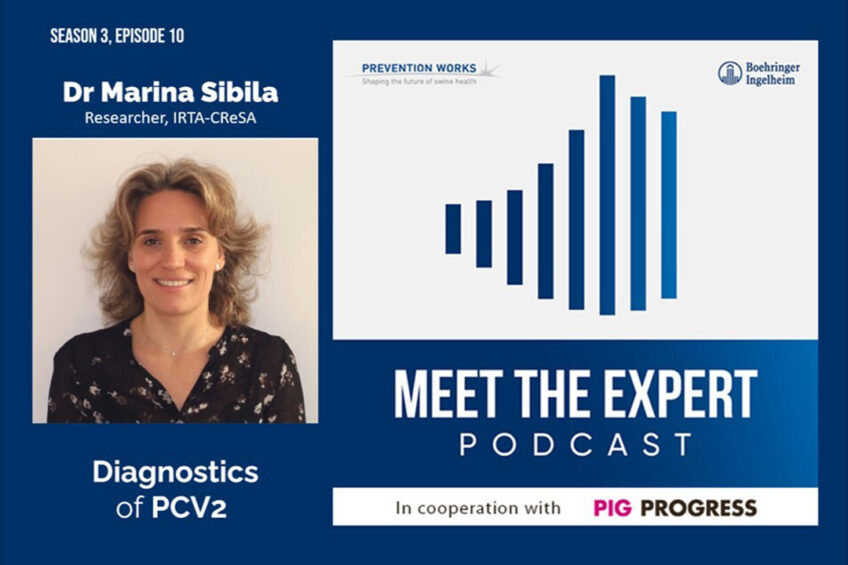Podcast: Diagnostics of PCV2

In collaboration with Boehringer Ingelheim, in this episode of ‘Meet the Expert’, Dr Marina Sibila from the animal research institute CReSA-IRTA in Spain discusses the diagnostics of Porcine Circovirus type 2.
Sibila’s research has focussed on the epidemiology, diagnosis, animal model development and prevention and treatment strategies of porcine respiratory pathogens, and mainly porcine circovirus PCV2, PCV3, and porcine mycoplasmas.
What is PCV2, and what are the clinical signs?
PCV2 is a virus that can be found in almost all farms in pig-producing countries, says Sibila, adding that almost all pigs will be infected once in their lives. Animals can be infected without being affected. The main diseases associated with PCV2 affect post-weaning piglets with the primary clinical signs including wasting and diarrhoea or respiratory problems. Still, the range of clinical symptoms remains wide, she says. The virus is also related to reproductive problems leading to abortions and mummifications in farrowing pigs.
Vaccines are effective
Several PCV2 vaccines are present in the market, and according to Sibila, they are “doing a really good job”. These vaccines can diminish the number of clinical cases and reduce mortality, but they cannot avoid infection. “So, the viruses are still on the farms, but not the disease.” She highlights that it remains important to maintain PCV2 vaccination although there may be no clinical signs.
Diagnosis of PCV2
Diagnosis of PCV2 should be composed of observation of clinical signs and pathologic lesions, observation of moderate to severe pathologic lesions in lymphoid organs, and then to detect the virus within these lesions.
Being positive with a PCR doesn’t mean there is a serious problem. So, quantitative PCR can be used to diagnose PCV but always in combination with the presence of clinical signs and pathological lesions. You can find an animal with high amount of virus but not showing clinical signs, says Sibila, adding that at a group level, if you have several animals with quite high PCV2 in lesions, this can confirm that those lesions are due to PCV2 infection.
If positive, Sibila advises to continue to check for the virus in the lesions and notes that there appears to be a link between the amount of the virus present and the severity of lesions.
CT value, ELISA, sampling and PCV3
Sibila explains what the CT value is, why it is important, and why a pig producer would want this value to be high. She explains if the CT value can help to determine the threshold between clinical and subclinical disease, and also discusses the purpose of the ELISA technique. Sibila has also spent much time researching PCV3. She talks about some very interesting findings.







